
Nintendo Co., Ltd. is a Japanese multinational video game company headquartered in Kyoto. It develops, publishes and releases both video games and video game consoles.

SNK Corporation is a Japanese video game hardware and software company. It is the successor to the company Shin Nihon Kikaku and presently owns the SNK video game brand and the Neo Geo video game platform, and electronics. SNK's predecessor Shin Nihon Kikaku Corporation was founded in 1978 by Eikichi Kawasaki. In 1981, the name was informally shortened to SNK Corporation, which became the company's official name in 1986.

Gunpei Yokoi, sometimes transliterated as Gumpei Yokoi, was a Japanese toy maker and video game designer. As a long-time Nintendo employee, he was best known as creator of the Game & Watch handheld system, inventor of the cross-shaped Control Pad, the original designer of the Game Boy, and producer of a few long-running and critically acclaimed video game franchises such as Metroid and Kid Icarus.

Bandai Co., Ltd. is a Japanese multinational toy manufacturer and distributor headquartered in Taitō, Tokyo. Its international branches, Bandai Namco Toys & Collectables America and Bandai UK, are respectively headquartered in Irvine, California, and Richmond, London. Since 2006, Bandai is the toy production division of Bandai Namco Holdings. Between 1981 and 2001, Bandai was a manufacturer of video game consoles.

Hudson Soft Co., Ltd. was a Japanese video game company that released numerous games for video game consoles, home computers and mobile phones, mainly from the 1980s to the 2000s. It was headquartered in the Midtown Tower in Tokyo, with an additional office in the Hudson Building in Sapporo.

Irem Software Engineering is a Japanese video game console developer and publisher, and formerly a developer and manufacturer of arcade games as well. The company has its headquarters in Chiyoda, Tokyo.
Intelligent Systems Co., Ltd. is a Japanese video game developer best known for developing games published by Nintendo with the Fire Emblem, Paper Mario, WarioWare, and Wars video game series. Originally, the company was headquartered at the Nintendo Kyoto Research Center in Higashiyama-ku, Kyoto, but later moved to a building near Nintendo's main headquarters in October 2013. They were also responsible for the creation of various development hardware both first and 3rd party developers would use to make games for Nintendo systems, such as the IS Nitro Emulator, the official development kit for the Nintendo DS.
Thin Chen Enterprise, also known as Sachen, was a Taiwanese company that developed several original games for the Nintendo Entertainment System, Mega Drive, Game Boy and other early cartridge-based handheld systems such as the Watara Supervision and Mega Duck. With the exception of the latter two handhelds, all of Thin Chen's games were produced without license from the console manufacturers. The company produced at least 70 unique games for the NES and Famicom and at least 32 for the Game Boy, making it the most prolific unlicensed developer and publisher for both consoles. The company also produced its own Nintendo Entertainment System hardware clones, such as the Q-Boy. Many of its games were released in an unfinished state, and received largely negative critical response.
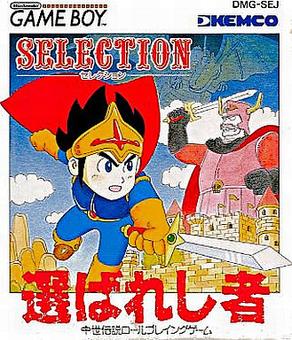
The Sword of Hope, released in Japan as Selection: Erabareshi Mono, is a 1989 first-person RPG for the Game Boy, developed by Kemco and published by Seika Corporation.
Culture Brain Inc. is a Japanese video game developer and publisher founded on October 5, 1980. In 2016, it was renamed Culture Brain Excel.
Sun Corporation, operating under the name Sunsoft, is a Japanese video game developer and publisher.

The Crazy Castle series is a platform game series created by Kemco and released on the Famicom Disk System, Nintendo Entertainment System, Game Boy, Game Boy Color, and Game Boy Advance. It stars different popular cartoon characters, most notably the Warner Bros. cartoon character Bugs Bunny, the Walt Disney cartoon character Mickey Mouse and the Universal cartoon character Woody Woodpecker.
Nintendo European Research & Development (NERD) is a French subsidiary for Nintendo, located in Paris, which develops software technologies and middleware for Nintendo platforms. This includes retro console emulators, patented video codecs, and DRM technology.

Tose Co., Ltd. is a Japanese video game development company based in Kyoto. It is mostly known for developing Nintendo's Game & Watch Gallery series, various Dragon Ball games, as well as other Nintendo products. Tose has developed or co-developed over 1,000 games since the company's inception in 1979, but is virtually never credited in the games themselves. Tose maintains a policy of having no creative input into the work they do, going so far as to refuse to put their names in the credits for most of the games they work on. As such, Tose has gained a reputation for being a "ghost developer".
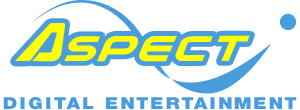
Aspect Co. Ltd was a Japanese based video game company founded in March 1991.

The history of Nintendo is from 1889 to the present, starting as a playing-card company to eventually becoming a multinational video game conglomerate. It has always remained headquartered in Kyoto, Japan.
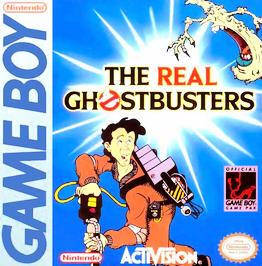
The Real Ghostbusters, known in Europe as Garfield Labyrinth and in Japan as Mickey Mouse IV: Mahō no Labyrinth, is a 1993 action-puzzle video game developed by Kemco and published in Japan and Europe by Kotobuki Systems and in North America by Activision.
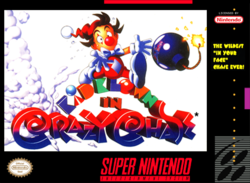
Kid Klown in Crazy Chase is a platform video game developed and published by Kemco for the Super Nintendo Entertainment System. It was released in North America in September 1994, Japan on October 21, 1994 and in Europe in 1995. The game features the Kid Klown, the player character who is tasked with rescuing the Princess Honey from the villain Black Jack. Players view gameplay from an isometric perspective as Kid Klown pursues a lit fuse in order to stop it from reaching a spade bomb. The game was re-released for the Game Boy Advance as Crazy Chase and features 11 new levels, four mini-games, and a multi-player mode. The re-release was released in Europe and North America in October 2002, while a release in Japan was planned but ultimately canceled. It was met with mixed reception from critics, who found it to be inferior to other games of its type. The game has a Japan-exclusive sequel Kid Klown in Crazy Chase 2: Love Love Hani Soudatsusen released for the Sony PlayStation in 1996.
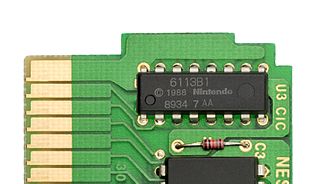
The Checking Integrated Circuit (CIC) is a lockout chip designed by Nintendo for the Nintendo Entertainment System (NES) video game console in 1985; the chip is part of a system known as 10NES, in which a key is used by the lock to both check if the game is authentic, and if the game is the same region as the console.














